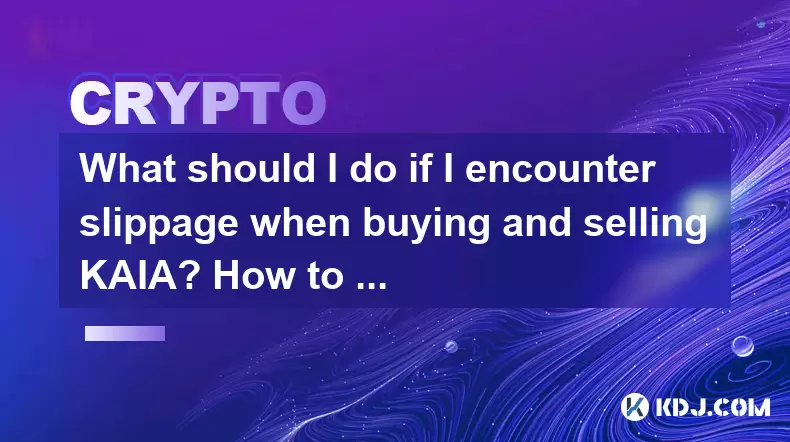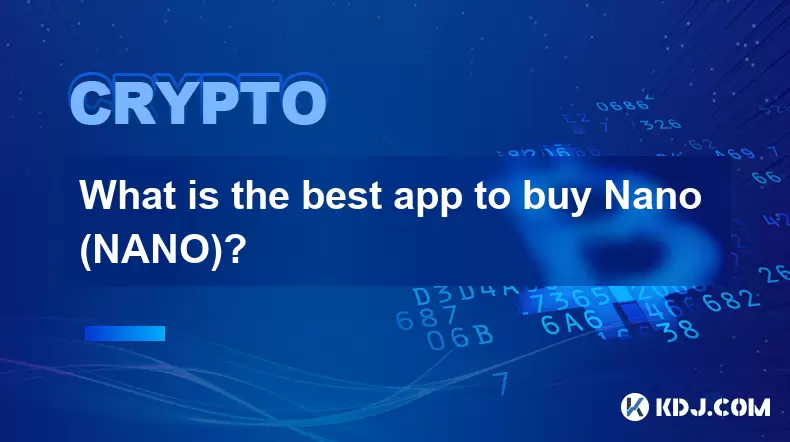-
 Bitcoin
Bitcoin $116900
0.00% -
 Ethereum
Ethereum $4280
5.48% -
 XRP
XRP $3.265
-1.45% -
 Tether USDt
Tether USDt $1.000
-0.01% -
 BNB
BNB $807.0
1.41% -
 Solana
Solana $183.1
2.93% -
 USDC
USDC $0.9999
0.00% -
 Dogecoin
Dogecoin $0.2440
6.50% -
 TRON
TRON $0.3357
-0.88% -
 Cardano
Cardano $0.8178
2.63% -
 Hyperliquid
Hyperliquid $44.13
7.45% -
 Chainlink
Chainlink $21.39
9.09% -
 Stellar
Stellar $0.4524
-0.84% -
 Sui
Sui $3.957
2.13% -
 Bitcoin Cash
Bitcoin Cash $572.7
-2.54% -
 Hedera
Hedera $0.2671
1.54% -
 Avalanche
Avalanche $24.77
4.17% -
 Ethena USDe
Ethena USDe $1.001
0.02% -
 Litecoin
Litecoin $122.3
-1.94% -
 Toncoin
Toncoin $3.432
2.26% -
 UNUS SED LEO
UNUS SED LEO $9.007
0.49% -
 Shiba Inu
Shiba Inu $0.00001396
5.26% -
 Uniswap
Uniswap $11.09
1.64% -
 Polkadot
Polkadot $4.155
4.57% -
 Dai
Dai $1.000
0.00% -
 Pepe
Pepe $0.00001253
5.11% -
 Cronos
Cronos $0.1588
2.67% -
 Bitget Token
Bitget Token $4.512
0.05% -
 Monero
Monero $275.0
0.64% -
 Ethena
Ethena $0.7527
15.10%
What should I do if I encounter slippage when buying and selling KAIA? How to reduce slippage losses?
Slippage in KAIA trading occurs when order execution price differs from expected; use limit orders and trade during high liquidity to minimize it.
May 07, 2025 at 02:56 pm

When trading cryptocurrencies like KAIA, slippage can be a common issue that affects your transactions. Slippage occurs when the price at which your order is executed differs from the price you expected when you placed the order. This can happen due to high volatility, low liquidity, or delays in order execution. Understanding how to manage and reduce slippage is crucial for traders looking to minimize losses and maximize their trading efficiency.
Understanding Slippage in KAIA Trading
Slippage is the difference between the expected price of a trade and the price at which the trade is actually executed. For instance, if you place a market order to buy KAIA at $0.50, but the order is filled at $0.52 due to rapid price changes, the $0.02 difference is the slippage. This phenomenon is more pronounced in markets with lower liquidity, like some smaller cryptocurrencies, where large orders can significantly impact the price.
Factors Contributing to Slippage in KAIA
Several factors can contribute to slippage when trading KAIA:
- Market Volatility: High volatility can lead to rapid price changes, increasing the likelihood of slippage.
- Liquidity: If there are fewer buyers and sellers, large orders can move the market price more easily.
- Order Type: Market orders are more susceptible to slippage than limit orders, as they prioritize speed over price.
- Trading Platform: The efficiency and speed of the trading platform can affect how quickly your order is executed.
Strategies to Reduce Slippage When Buying KAIA
To minimize slippage when buying KAIA, consider the following strategies:
Use Limit Orders: Instead of market orders, use limit orders to specify the maximum price you are willing to pay. This ensures that your order is only executed at your specified price or better.
- Go to your trading platform.
- Select KAIA as the asset you want to buy.
- Choose the "Limit Order" option.
- Enter the maximum price you are willing to pay.
- Set the amount of KAIA you want to buy.
- Review and submit your order.
Trade During High Liquidity Periods: Trading when there is higher liquidity can reduce the impact of your order on the market price. Typically, this occurs during major market hours or when there is significant trading activity.
Monitor Market Depth: Check the order book to see the current buy and sell orders. This can give you an idea of the potential slippage before you place your order.
Strategies to Reduce Slippage When Selling KAIA
When selling KAIA, similar strategies can be applied to minimize slippage:
Use Limit Orders: Specify the minimum price you are willing to accept for your KAIA. This can prevent your order from being filled at a lower price than expected.
- Go to your trading platform.
- Select KAIA as the asset you want to sell.
- Choose the "Limit Order" option.
- Enter the minimum price you are willing to accept.
- Set the amount of KAIA you want to sell.
- Review and submit your order.
Avoid Large Orders: Splitting a large order into smaller ones can reduce the impact on the market price and minimize slippage.
- Calculate the total amount of KAIA you want to sell.
- Divide the total into smaller, manageable chunks.
- Place multiple limit orders for each chunk at your desired price.
Trade During High Liquidity Periods: Similar to buying, selling during times of high liquidity can help reduce slippage.
Using Slippage Tolerance Settings
Some trading platforms allow you to set a slippage tolerance for your orders. This feature lets you specify the maximum percentage of slippage you are willing to accept. If the slippage exceeds this threshold, your order will not be executed.
Set Slippage Tolerance:
- Navigate to the advanced settings of your trading platform.
- Look for the "Slippage Tolerance" or similar option.
- Enter the maximum percentage of slippage you are willing to accept (e.g., 1%).
- Save the settings and place your order.
Monitoring and Adjusting Your Trading Strategy
To effectively manage slippage, it's important to continuously monitor the market and adjust your trading strategy as needed. Here are some tips:
- Stay Informed: Keep an eye on market news and events that could impact KAIA's price and liquidity.
- Review Past Trades: Analyze your past trades to identify patterns of slippage and adjust your strategies accordingly.
- Use Trading Tools: Utilize trading tools and platforms that offer real-time data and analytics to make more informed decisions.
Frequently Asked Questions
Q: Can slippage be completely avoided when trading KAIA?
A: While it's not possible to completely avoid slippage, you can significantly reduce its impact by using the strategies mentioned above, such as limit orders and trading during high liquidity periods.
Q: How does the size of my order affect slippage?
A: Larger orders can have a greater impact on the market price, leading to higher slippage. Splitting large orders into smaller ones can help mitigate this effect.
Q: Is slippage more common in decentralized exchanges (DEXs) than centralized exchanges (CEXs)?
A: Slippage can occur on both DEXs and CEXs, but it may be more pronounced on DEXs due to potentially lower liquidity. However, using the right strategies can help manage slippage on any platform.
Q: Can I set different slippage tolerances for buying and selling KAIA?
A: Some trading platforms allow you to set different slippage tolerances for buying and selling. Check your platform's settings to see if this option is available and adjust accordingly.
Disclaimer:info@kdj.com
The information provided is not trading advice. kdj.com does not assume any responsibility for any investments made based on the information provided in this article. Cryptocurrencies are highly volatile and it is highly recommended that you invest with caution after thorough research!
If you believe that the content used on this website infringes your copyright, please contact us immediately (info@kdj.com) and we will delete it promptly.
- Shiba Inu, Pepe, and Remittix: A Tale of Memes, Hype, and Real-World Utility
- 2025-08-10 08:30:12
- Ethereum Price, ETH Tokens, Rally Prediction: Is a New All-Time High In Sight?
- 2025-08-10 08:30:12
- XRP, Elon Musk, and Wealth: A Crypto Conundrum
- 2025-08-10 08:50:12
- Retire Early with Crypto: High-Conviction Plays Beyond Bitcoin
- 2025-08-10 08:50:12
- BlockDAG, Render, and Polkadot: Charting the Course for Long-Term Crypto Dominance
- 2025-08-10 08:55:21
- Toncoin's Ascent: Price Predictions and the VERB Strategy Impact
- 2025-08-10 08:55:21
Related knowledge

How to purchase Aragon (ANT)?
Aug 09,2025 at 11:56pm
Understanding Aragon (ANT) and Its PurposeAragon (ANT) is a decentralized governance token that powers the Aragon Network, a platform built on the Eth...

Where can I buy UMA (UMA)?
Aug 07,2025 at 06:42pm
Understanding UMA and Its Role in Decentralized FinanceUMA (Universal Market Access) is an Ethereum-based decentralized finance (DeFi) protocol design...

How to buy Storj (STORJ) tokens?
Aug 09,2025 at 07:28am
Understanding Storj (STORJ) and Its Role in Decentralized StorageStorj is a decentralized cloud storage platform that leverages blockchain technology ...

What is the best app to buy Nano (NANO)?
Aug 09,2025 at 03:35am
Understanding Nano (NANO) and Its Unique FeaturesNano is a feeless, instant cryptocurrency designed for fast peer-to-peer transactions. Unlike many ot...

Where can I purchase Siacoin (SC)?
Aug 08,2025 at 11:14am
Understanding Siacoin (SC) and Its Role in the Sia NetworkSiacoin (SC) is the native cryptocurrency of the Sia decentralized cloud storage platform, a...

How to sell my Ontology (ONT) tokens?
Aug 09,2025 at 06:08pm
Understanding Ontology (ONT) and Its Trading EcosystemBefore selling your Ontology (ONT) tokens, it's essential to understand the nature of the crypto...

How to purchase Aragon (ANT)?
Aug 09,2025 at 11:56pm
Understanding Aragon (ANT) and Its PurposeAragon (ANT) is a decentralized governance token that powers the Aragon Network, a platform built on the Eth...

Where can I buy UMA (UMA)?
Aug 07,2025 at 06:42pm
Understanding UMA and Its Role in Decentralized FinanceUMA (Universal Market Access) is an Ethereum-based decentralized finance (DeFi) protocol design...

How to buy Storj (STORJ) tokens?
Aug 09,2025 at 07:28am
Understanding Storj (STORJ) and Its Role in Decentralized StorageStorj is a decentralized cloud storage platform that leverages blockchain technology ...

What is the best app to buy Nano (NANO)?
Aug 09,2025 at 03:35am
Understanding Nano (NANO) and Its Unique FeaturesNano is a feeless, instant cryptocurrency designed for fast peer-to-peer transactions. Unlike many ot...

Where can I purchase Siacoin (SC)?
Aug 08,2025 at 11:14am
Understanding Siacoin (SC) and Its Role in the Sia NetworkSiacoin (SC) is the native cryptocurrency of the Sia decentralized cloud storage platform, a...

How to sell my Ontology (ONT) tokens?
Aug 09,2025 at 06:08pm
Understanding Ontology (ONT) and Its Trading EcosystemBefore selling your Ontology (ONT) tokens, it's essential to understand the nature of the crypto...
See all articles

























































































